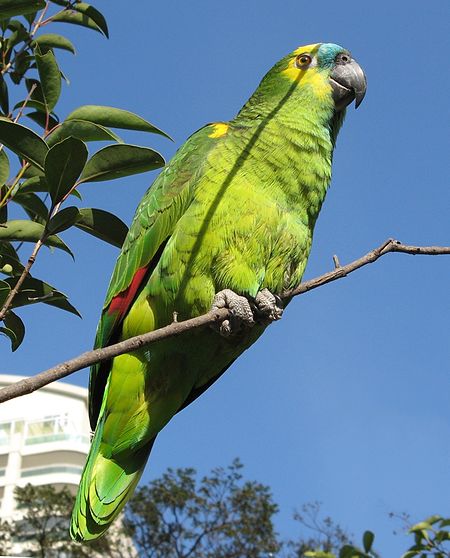Type the name of the breed you're looking for below
[wpdreams_ajaxsearchlite] Don't see the breed your're looking for? Click here and let us know!
Blue Fronted Amazon Parrot
| Origin | The range of the Blue-Fronted Amazon extends over eastern and northern Bolivia, eastern Brazil, Paraguay and northern Argentina. A small feral breeding population is also present in the greener regions of Stuttgart in Germany. |
| Size | This species can grow up to 15 in(38 cm) |
| Lifespan | Can live up to 80 years |
| Noise | Moderate, talkative birds. |
| Characteristics | They have blue feathers on the forehead above the beak and yellow on the face and crown. Distribution of blue and yellow varies greatly among individuals. Unlike most other Amazon parrots, its beak is mostly black. There is no overt sexual dimorphism to the human eye, but analysis of the feathers using spectrometry, a method which allows the plumage to be seen as it would be by a parrot's tetrachromatic vision, shows clear differences between the plumage of the sexes. Juveniles of parrots are duller and have dark irises. |
| Interaction/Time Requirements, Diet, Supplies Needed | Parrots do well in aviaries and cages. They require a warm habitat for the winter months. Do not allow your birds outdoors until all signs of frost are gone. Space is important and indoor cages should be as large as possible. A large cage is required even if the bird is going to spend lots of time out of its habitat with you. Their diet in the wild consists of mainly fruits, wild figs, unripe nuts, flower and leaf buds, and some seeds. In captivity, they will eat most fruits including mangos, figs, guavas, bananas, melons, stone fruits, grapes, citrus fruits, pears, apples, pomegranate and papaya (pawpaw). You need to change food and water daily, and clean the cage at least once a week, replacing toys and broken climbing branches. |
| Other Considerations | They don't like to be in crowded spaces and will sometimes be aggressive towards other birds if they don't have enough space. Parrots can also be hand reared, provided that they have a large cage and are taken out of their cage on a daily basis to prevent boredom, as it may result in the parrot pulling out its feathers to occupy itself. |



